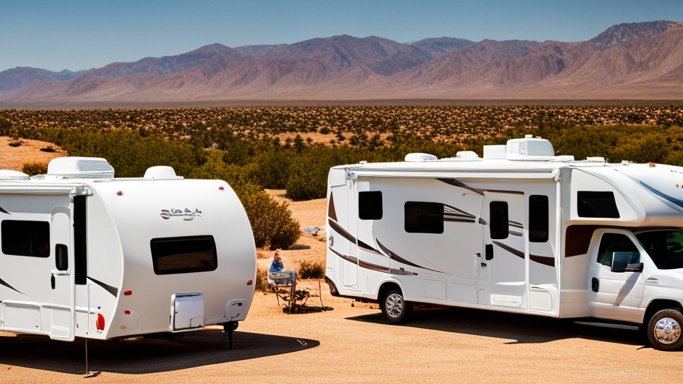Sustainable Power for Diverse RV Lifestyles
Solar power systems are a key to sustainable RV living, offering freedom and comfort regardless of your location. Understanding how to tailor these systems to different RV sizes ensures you have the right setup for your needs.
Electricity Basics for RV Solar Systems
Understanding basic electrical terms is crucial for designing your RV solar system:
- Voltage (V): Electrical pressure pushing electrons through a circuit.
- Current (A): Flow rate of electric charge.
- Power (Watts, W): Rate of energy transfer, calculated as Voltage x Current.
Key Components of RV Solar Systems
- Solar Panels: Capture sunlight and convert it into DC electricity.
- Charge Controller: Manages the electricity flow to batteries.
- Batteries: Store the electricity for later use.
- Inverter: Converts DC power from batteries into AC power for appliances.
Solar Power System Specifications for Common RV Sizes
- Medium-Sized Travel Trailer (1 AC unit):
- Solar Panels: About 400-600 Watts (W) – Look for panels that total this wattage.
- Batteries: 200-300 Ampere-hours (Ah) – Deep-cycle batteries with this capacity.
- Inverter: At least 2000 Watts (W) – Pure sine wave inverter recommended.
- Charge Controller: 30-40 Amps (A) – MPPT type for better efficiency.
- Larger Travel Trailer (2 AC units):
- Solar Panels: Approximately 800-1000 Watts (W) – Combined wattage of all panels.
- Batteries: 400-600 Ampere-hours (Ah) – Larger capacity for more energy storage.
- Inverter: Minimum of 3000 Watts (W) – To handle higher power demands.
- Charge Controller: 40-60 Amps (A) – MPPT type for managing larger solar arrays.
- 5th Wheel (3 AC units):
- Solar Panels: Around 1200-1500 Watts (W) – Total wattage should be in this range.
- Batteries: 600-800 Ampere-hours (Ah) – To ensure enough storage for higher usage.
- Inverter: At least 4000 Watts (W) – For powering multiple AC units and appliances.
- Charge Controller: 60-80 Amps (A) – MPPT type for optimum solar energy management.

How the System Functions
- Energy Conversion and Storage: Solar panels convert solar energy to electrical energy, stored in batteries.
- Power Use: The inverter converts the stored DC power to AC power for appliances.
- Efficiency: Properly sizing each component ensures optimal system efficiency.
Choosing the Right System for Your RV
- Power Assessment: Calculate total appliance wattage to determine inverter and battery capacity.
- Solar Panel Selection: Base on available space and power needs.
- Battery Capacity: Should match your energy storage requirements.
Empowering Your RV Adventures
Equipping your RV with a tailored solar power system brings self-sufficiency and comfort to your travels. Whether in a small travel trailer or a large 5th wheel, a solar setup ensures you’re powered for adventure.








